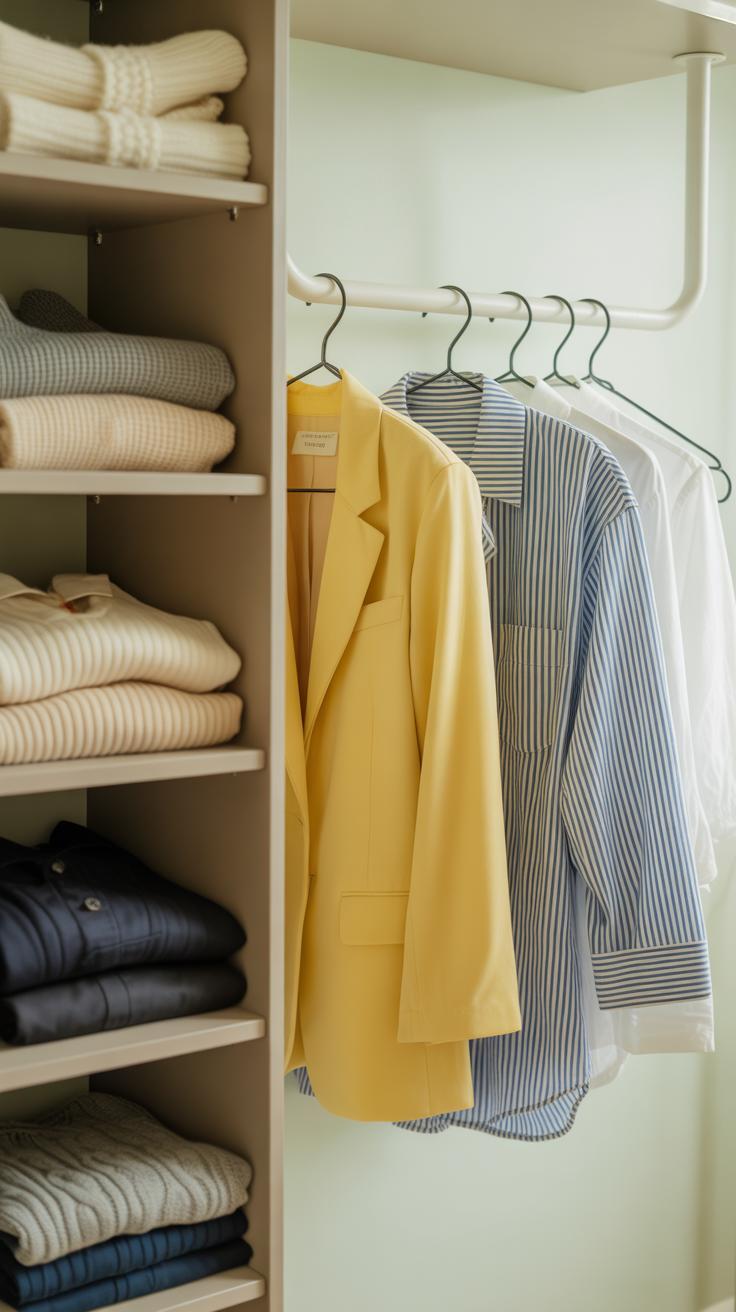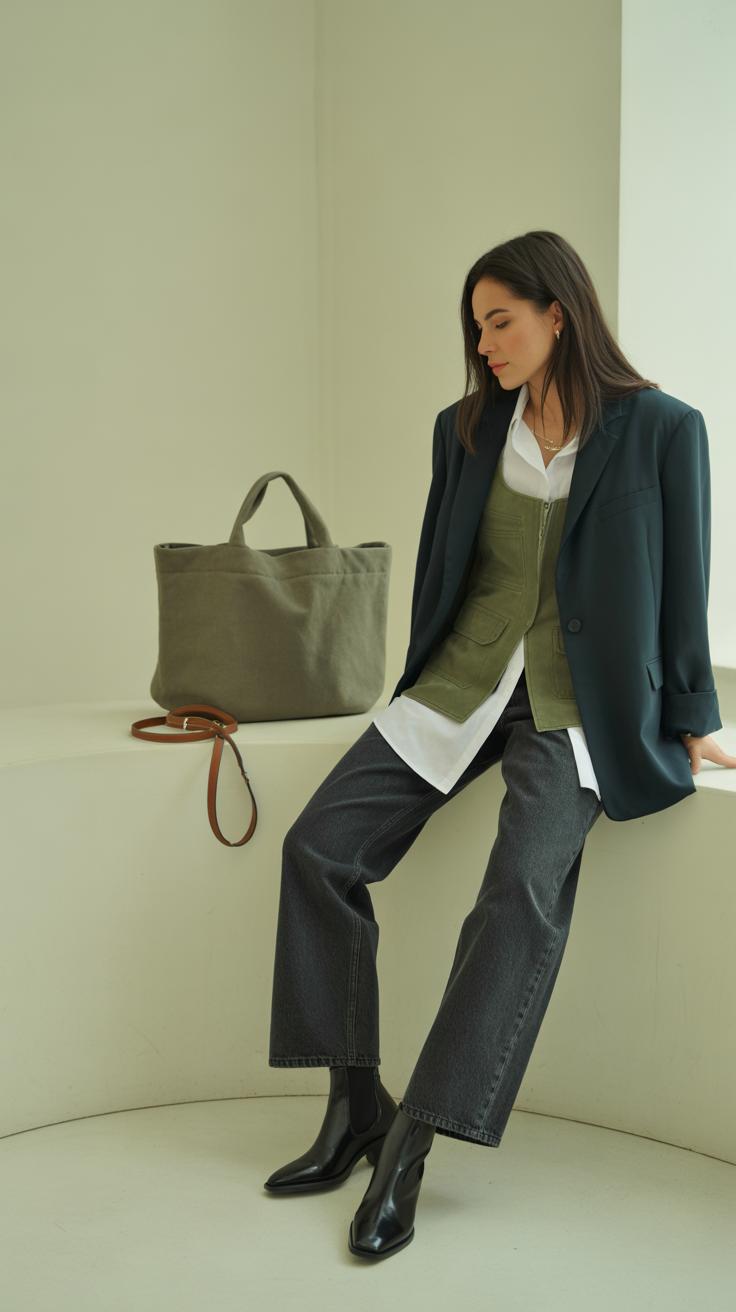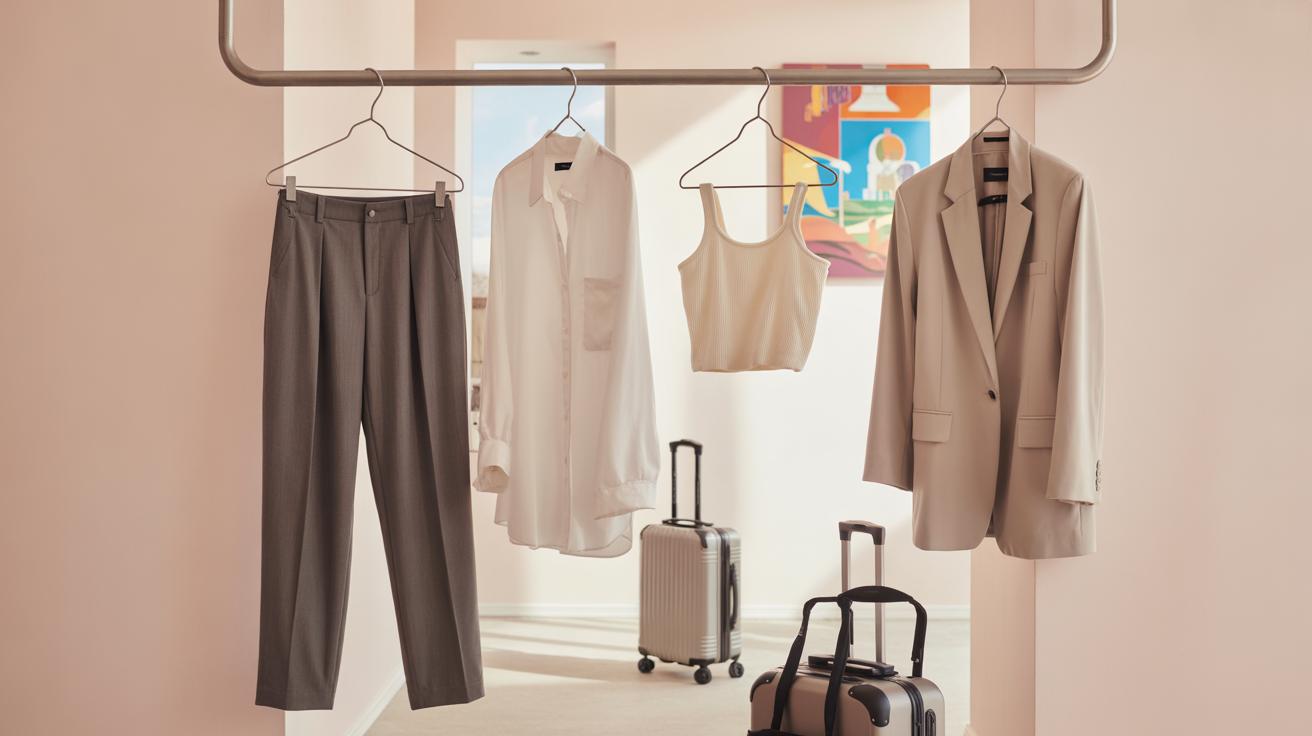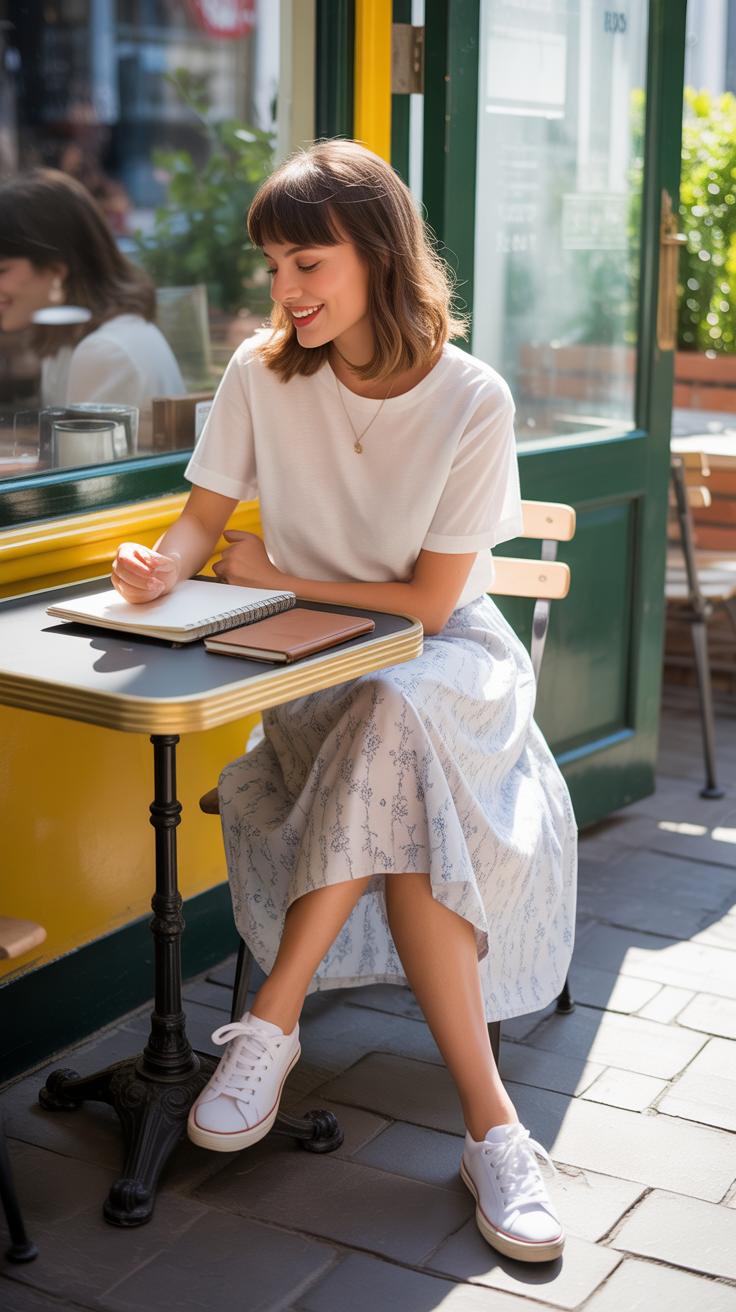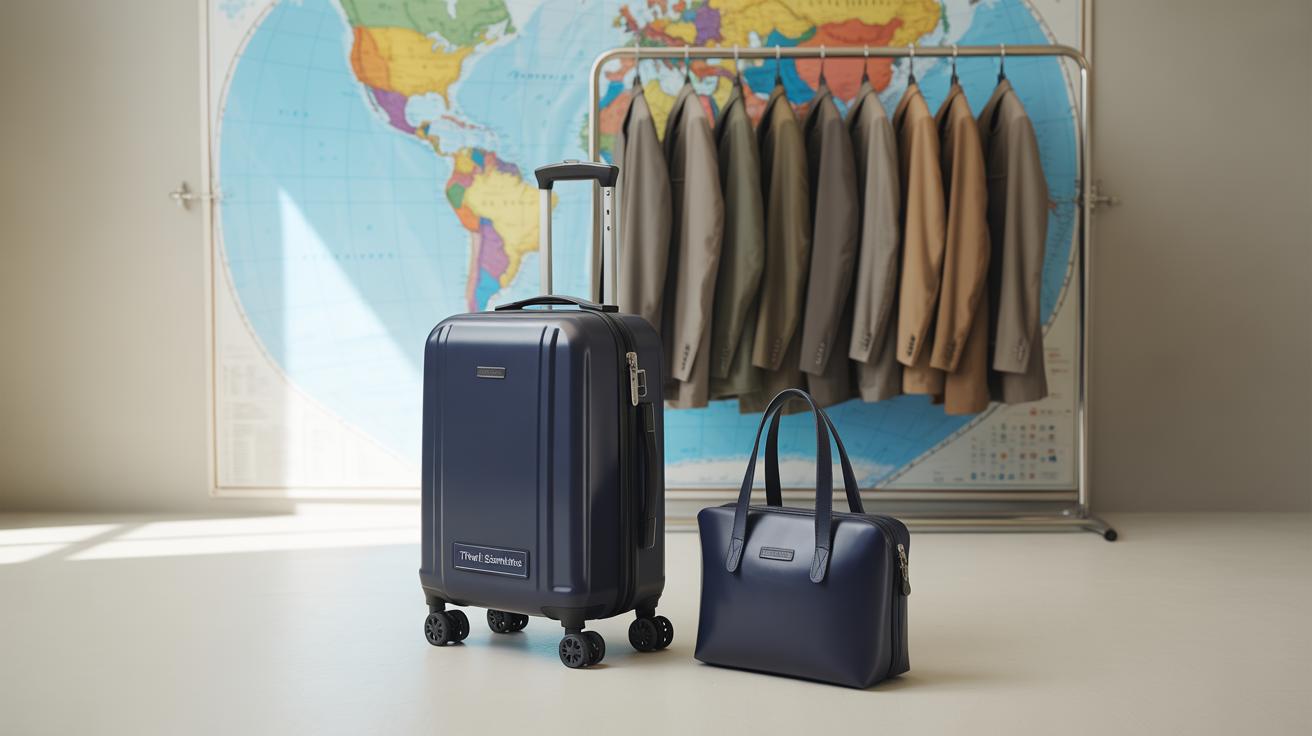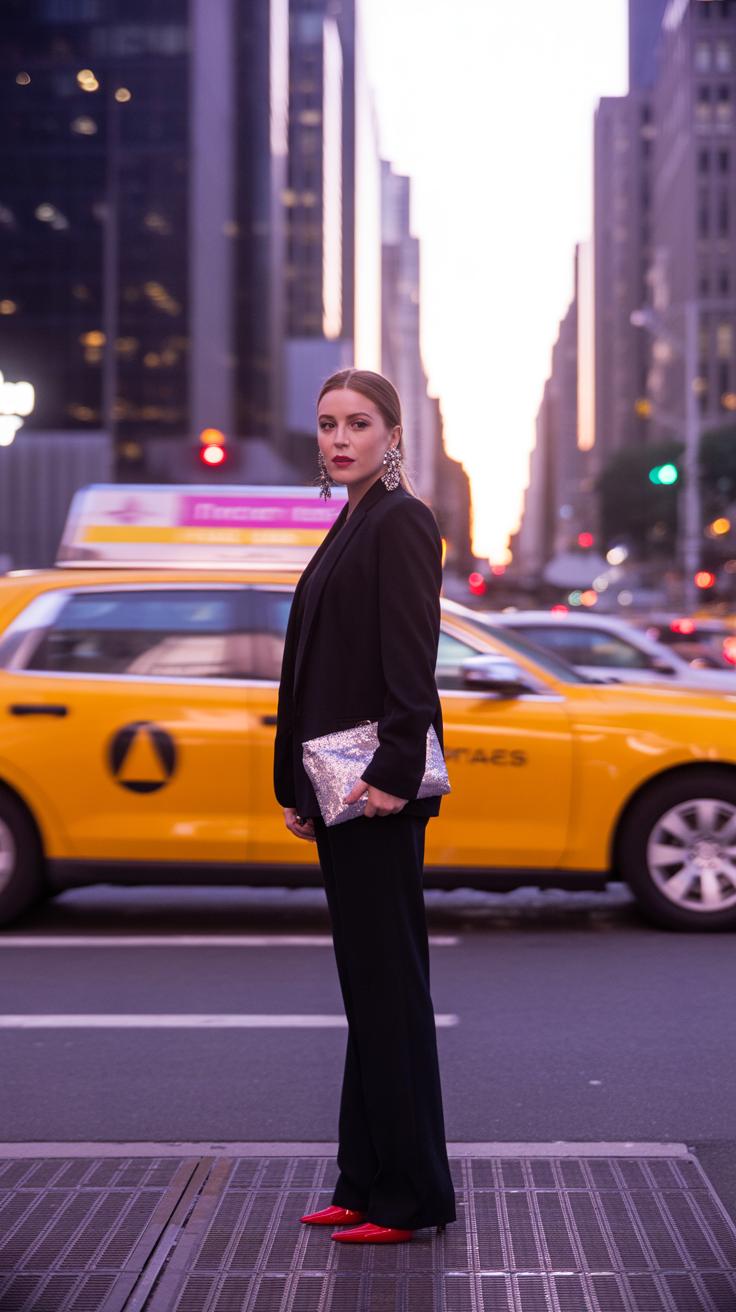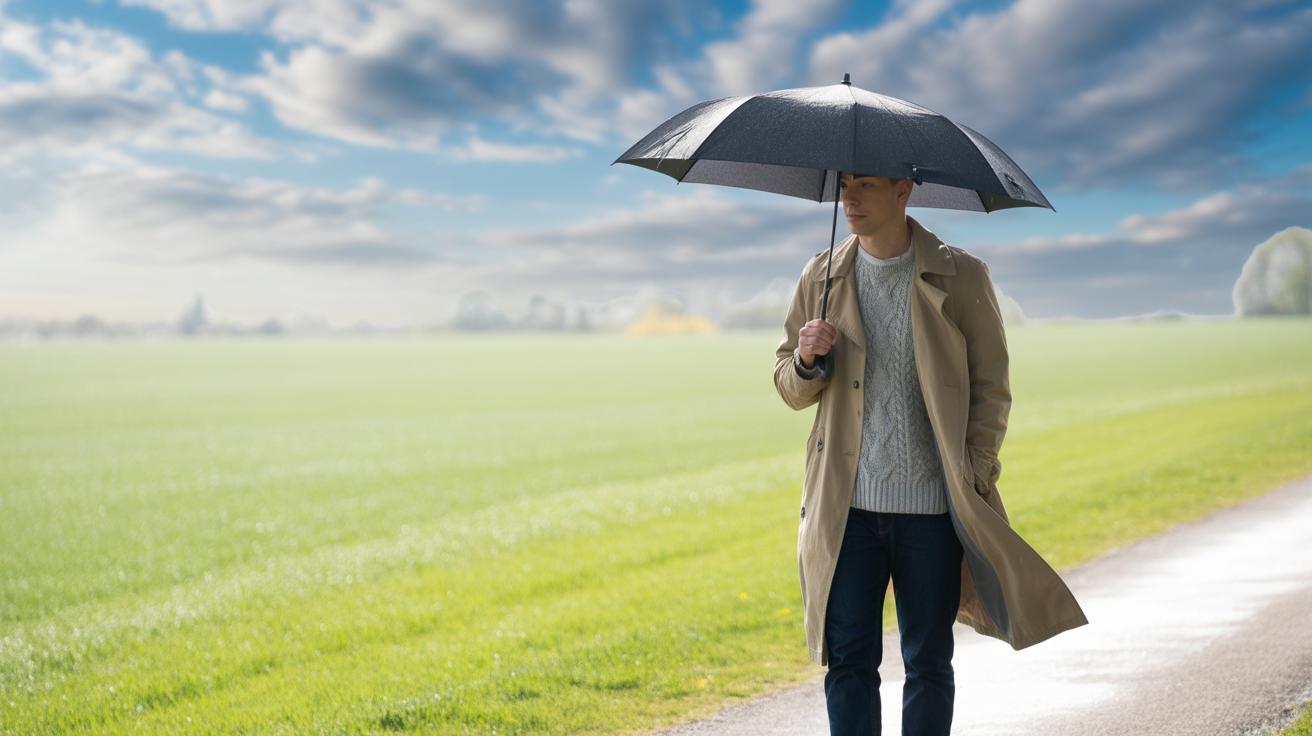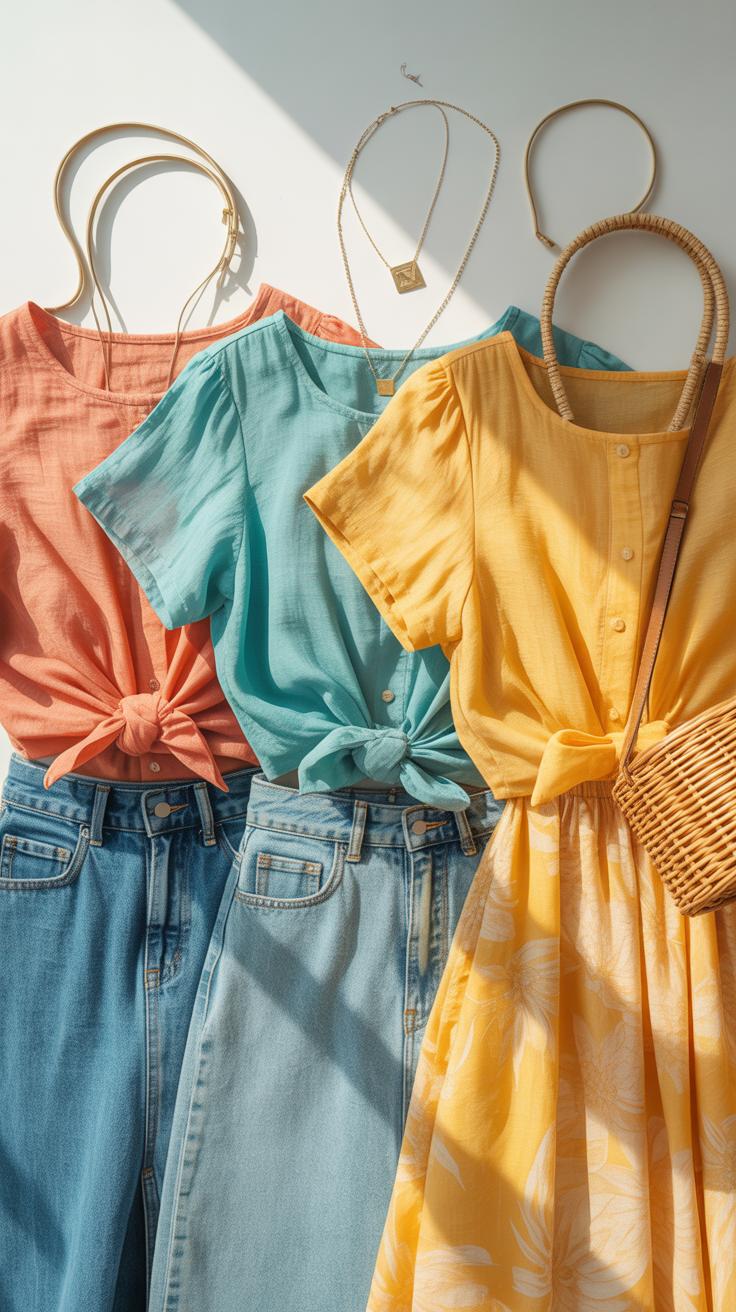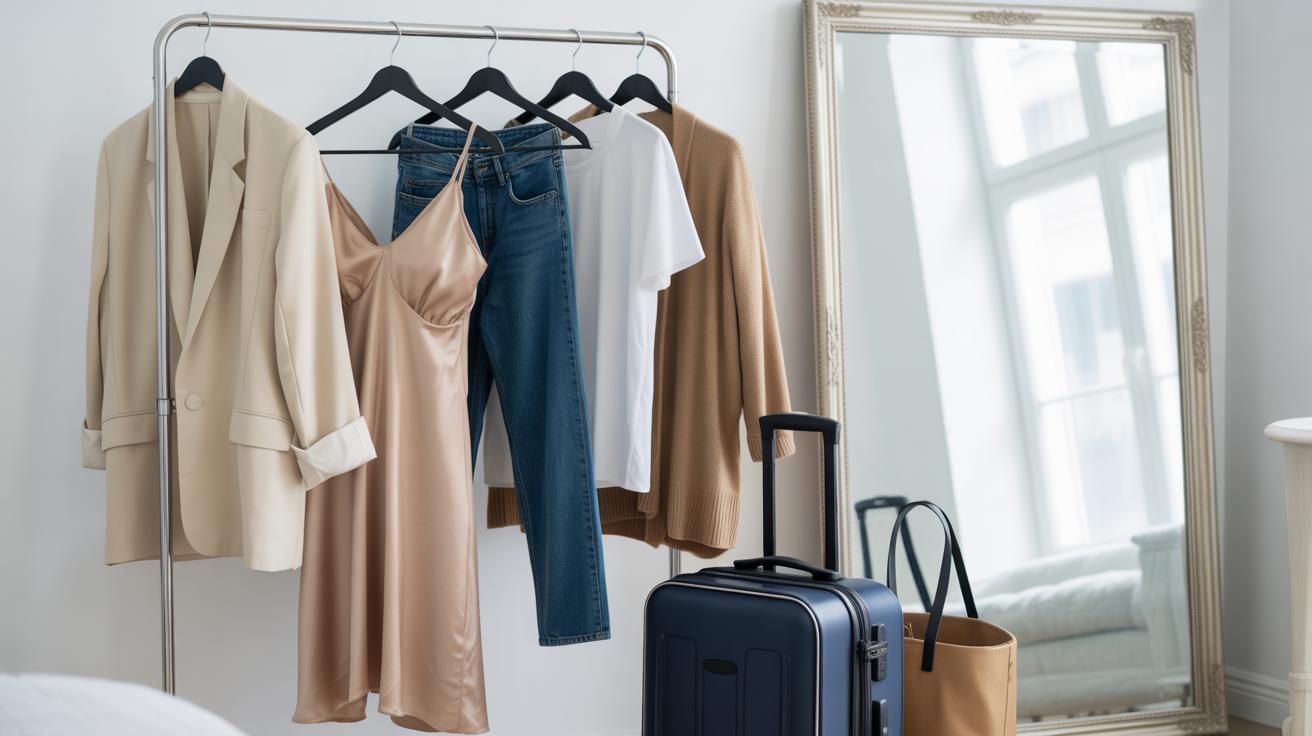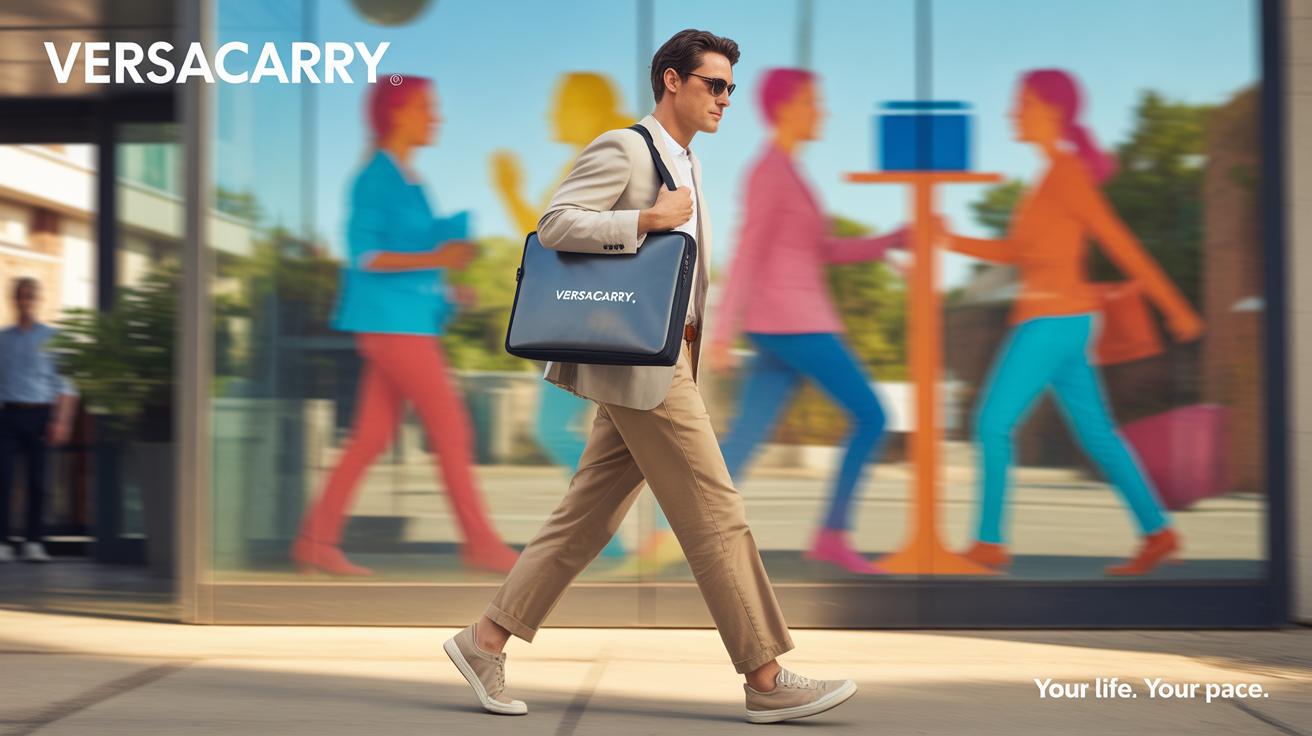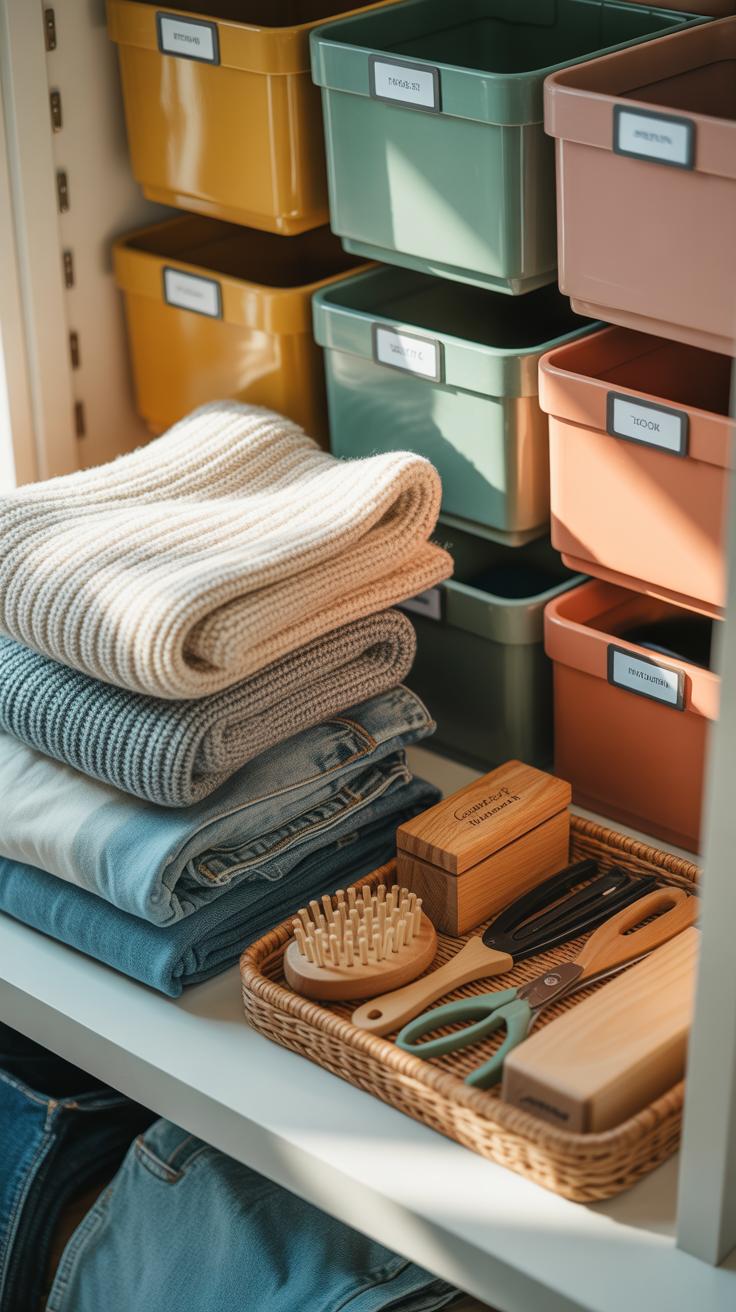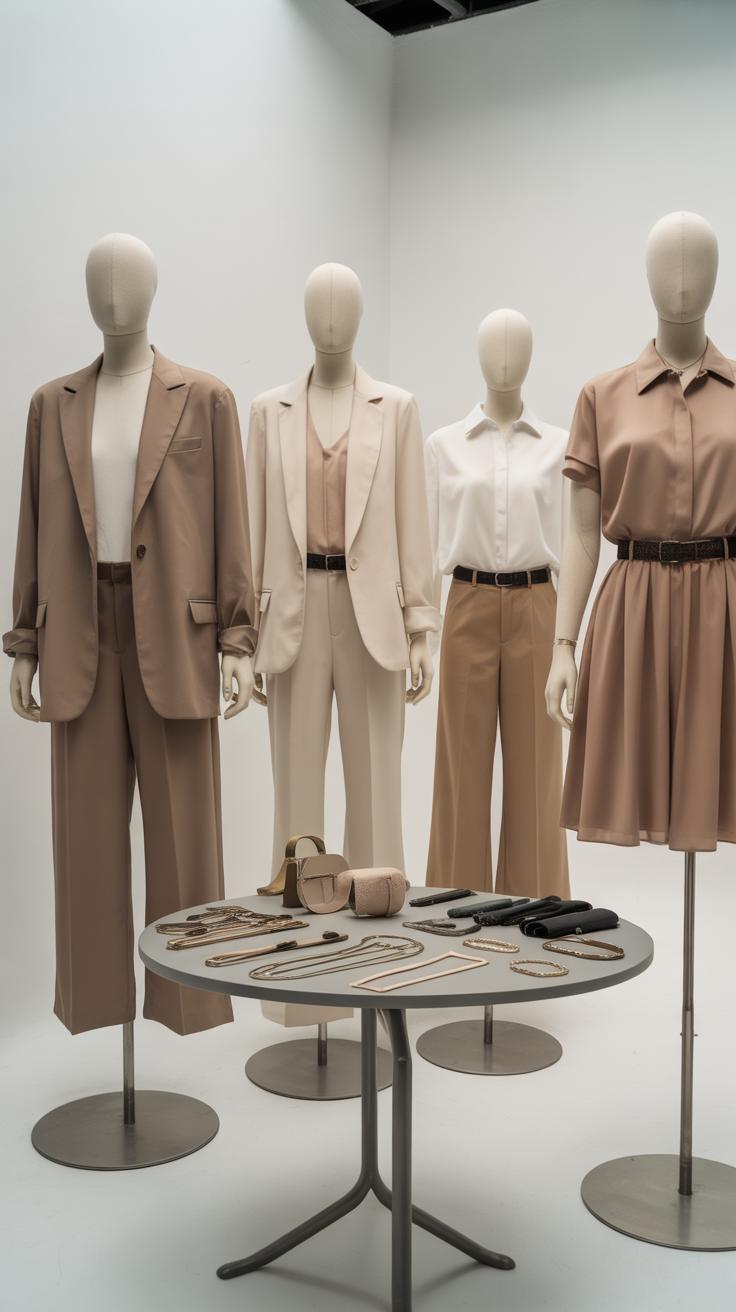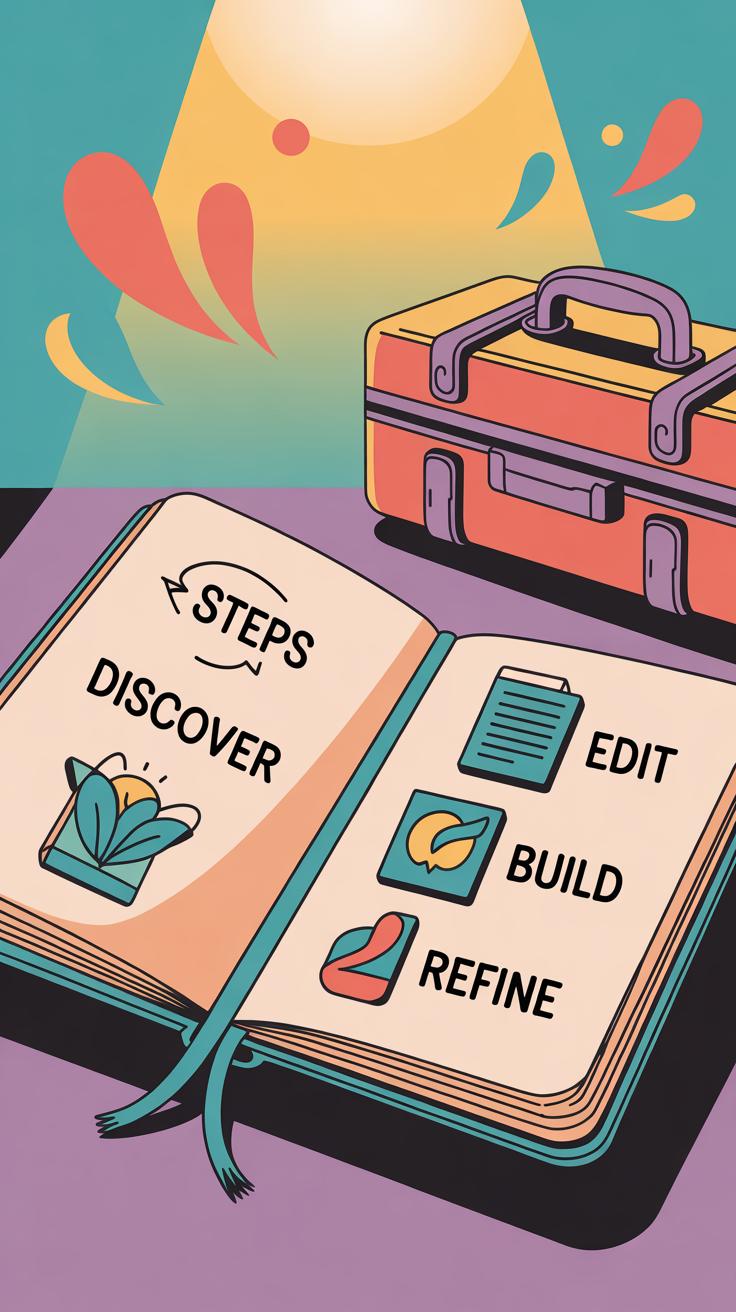Introduction
Capsule wardrobes offer a smart way to keep your clothing minimal yet versatile. With a small collection of essential pieces, you can easily mix and match to create many looks. This saves time and space, making your daily dressing easier.
This article explores how capsule wardrobe outfits can work for both day and night. You will learn how to pick key pieces and style them for different occasions. Whether you go to work, run errands, or go out at night, your capsule wardrobe can keep you looking great all day long.
Understanding Capsule Wardrobes
A capsule wardrobe is basically a small collection of clothes chosen to mix and match easily. It’s about keeping a few, well-made items that all work together instead of a closet crammed with pieces you rarely wear. The idea is to have versatile, timeless staples instead of fleeting trends. This concept goes back decades, with roots in the 1940s and 1970s, but it’s become more popular recently as people look for simpler ways to get dressed.
Think of a capsule as a puzzle with only essential pieces—some jeans, a few tops, maybe a jacket or two—that build countless outfits. For example, a white button-down shirt, a black blazer, a pair of dark skinny jeans, and a classic dress can each pair with almost everything else. These are your base items that keep styling flexible.
What’s good about this approach? It can make mornings less stressful because you don’t have to stare at a full closet trying to pick what matches. You reduce clutter since you only keep what you really need or love. It can also save money, oddly enough, since you buy less but better pieces that last longer. So, a capsule wardrobe isn’t just a fashion choice; it’s a way to simplify daily routines without feeling like you’re limiting yourself too much. Have you ever found yourself overwhelmed by too many clothes but still feeling like you have nothing to wear? That’s exactly where a capsule can help.
Choosing Your Key Pieces
Picking the right pieces for a capsule wardrobe isn’t just about having fewer clothes. It’s about choosing items that play well together throughout your day, whether you’re rushing to work or going out later.
Trousers, for example, should lean toward classic cuts and neutral shades — think black, navy, or beige. They match just about any top and can easily shift from casual to polished with the right shoes or accessories.
Skirts in solid colors or simple patterns work similarly. A midi skirt in a neutral tone pairs well with blouses or basic tees alike. It’s surprising how a simple change in top can give the skirt a totally different vibe.
Tops are trickier since they define your look more obviously. You want a mix of flattering basics—maybe a white button-down, a soft knit sweater, and a few tees in neutral tones. Each can layer under jackets or stand alone.
Outerwear doesn’t have to be complicated. A tailored blazer, a light trench, or a clean-lined leather jacket often does the trick. They finish an outfit quickly but don’t limit your options either.
Speaking of finishing touches, shoes matter more than you might think. Having a pair of classic loafers, simple ankle boots, and maybe one dressier pair sets you up for any plan that pops up.
Colors and fabrics deserve attention. Neutrals don’t just look cohesive; they simplify mixing and matching. Sticking mostly to blacks, whites, greys, tans, and perhaps one subtle color helps keep your outfits fluid and less stressful when deciding what to wear.
Choosing good-quality materials also pays off. Natural fabrics like cotton, wool, or linen often wear better and feel more comfortable, which means you’ll reach for those pieces repeatedly.
Have you noticed how a softer fabric or a well-fitted trouser changes how you feel about an outfit? The way something fits and feels can sway your whole day.
So, which pieces are non-negotiables for you? And are you leaning more toward comfort or style, or can you have a bit of both without overcomplicating things? Picking these staples carefully might just be the trick to carrying your day-to-night looks effortlessly.
Creating Day Looks
Styling capsule wardrobe pieces for daytime often means balancing comfort with a sense of purpose. Think about what your day holds—work meetings, errands, casual chats over coffee—and build around that. You might reach for a pair of well-fitting trousers paired with a simple blouse for a clean, put-together vibe. A relaxed knit sweater layered over a crisp white shirt also works well when you want to look approachable but not sloppy.
For those easygoing days, pairing a soft t-shirt with straight-leg jeans and slip-on sneakers feels natural. Maybe add a lightweight jacket or cardigan if the weather calls for it. These basics keep things simple but still pull together. You don’t have to overthink it—sometimes a cozy fit is all you need.
When it comes to smart daytime outfits for work or meetings, a tailored blazer instantly sharpens your look, even if you wear it over a plain tee or a classic dress. Swap sneakers for loafers or low heels to elevate the feel without going too formal. A monochrome color scheme often helps, too—something like navy and cream, or black with soft gray—avoiding the distraction of too many patterns. A neat bag and minimal jewelry can finish things off, keeping your style intentional but not fussy.
Sticking to your capsule pieces during the day makes dressing quicker but offers enough flexibility to express yourself. Do you find certain items make this easier? Maybe a key blazer or that one dress that works with flats and heels alike? Those pieces tend to become your go-tos, for better or worse.
Transitioning to Night Outfits
Shifting your daytime look into something ready for the evening doesn’t have to be complicated. It’s often about subtle changes that catch the eye. You might start with the same simple dress or tailored pants worn during the day, then add a few key pieces that change the vibe. Sometimes, just a bold necklace or a pair of statement earrings can do the trick—though other times a touch of something unexpected, like a silk scarf or a sleek clutch, might be what’s missing.
Think about what you want to emphasize in the evening. Is it a bit more sparkle? A pop of color? Or maybe a sleeker silhouette? Don’t hesitate to swap daytime bags for smaller, structured ones. Evening accessories tend to be less practical but more striking. And yes, the shoes matter—a flat might work for daylight hours, but an ankle boot or a modest heel can turn heads when it’s time to step out.
Outerwear also plays a huge role. Swapping a casual jacket for a blazer or a fitted coat instantly elevates an outfit. It’s these changes that keep your look fresh without needing a full wardrobe overhaul. I’ve found that sometimes the simplest swap—like a different pair of shoes or adding a scarf—makes me feel more confident and ready for whatever the evening holds. Have you noticed how your mood shifts just by tweaking your outfit a little?
Adding Accessories for Evening
Accessories have this sneaky way of transforming an outfit, especially when you move from day to night. Jewelry can be as simple or as bold as you like: a pair of gold hoops or layered necklaces adds interest without overwhelming your look. Scarves aren’t just for warmth; a silk one tied around your neck or wrist can make a standard dress or top look more intentional.
Bags tend to go from functional to fabulous—think a sleek clutch or a small crossbody with metallic details. These often become conversation starters on their own. Even a belt with a subtle shine or embellishment can take a plain dress from casual to chic. It’s tempting to pile on multiple items, but sometimes less makes more, especially if one piece is already bold. Do you find yourself reaching for the same accessory every night? Maybe it’s time to experiment a bit.
Changing Footwear and Outerwear
Switching shoes can completely alter the mood of your outfit. Daytime flats or sneakers give way to heeled boots or pointed-toe pumps when the sun goes down. That small change makes your posture different, your attitude shifts—it’s not just a style swap, it’s an energy shift. Outerwear follows a similar pattern. A denim jacket or bulky coat might feel too casual in the evening, so swapping for a sharp blazer, leather jacket, or a tailored trench refines the look.
This change isn’t just about looks, it’s about feeling appropriate too. You want to fit the occasion without trying too hard. Sometimes a well-chosen shoe or coat lets your confidence lead. I still remember once wearing the same dress day and night, just swapping my sneakers for heels and my light jacket for a blazer, and suddenly I felt… different, sharper, even a bit more daring. What’s your go-to shoe or outerwear change when you head out at night?
Mix and Match Strategies
When working with a capsule wardrobe, mixing and matching isn’t just about putting pieces together—it’s an exercise in creativity that actually saves you time. Instead of staring at your closet and wondering what to wear, having a handful of versatile items means you can quickly build outfits suitable for varied occasions.
Try pairing a classic black dress with a denim jacket and simple sneakers for a casual day look. Then swap the jacket for a sleek blazer and add heels to take the outfit into evening mode. Switching just one or two key pieces can change the mood completely, and you don’t need an overwhelming number of clothes to do it.
Here are some practical tips I’ve found handy:
- Choose a base color or neutral palette so pieces naturally coordinate.
- Mix structured items with relaxed ones—a tailored blazer with soft tees or flowy skirts.
- Play with shoes and accessories to shift style without extra layers.
- Keep a few statement pieces that can dress up simple basics.
It’s easy, really, to feel stuck wearing the “same thing,” but mixing different elements allows your wardrobe to feel fresh without growing in size.
Combining Different Textures and Patterns
Textures and patterns make a big difference in how your outfit reads, but some people shy away, worried about looking too busy. The trick is to keep things subtle and balanced. A chunky knit paired with smooth silk or a matte cotton tee with a leather jacket adds quiet contrast that’s visually interesting but not overwhelming.
When it comes to patterns, simple and small-scale is usually safer. Narrow stripes with delicate polka dots, or a muted floral with solid pieces, can add depth without clashing. I tend to stick with one patterned piece per outfit, as adding more often feels cluttered, at least to my eye.
Does it ever get tricky? Sometimes. For instance, combining different textures in humid weather isn’t always comfortable. But experimenting within those limits can make capsule dressing feel less rigid and more fun.
Layering for Versatility
Layering turns a static outfit into something flexible for different settings and temperatures. A lightweight scarf thrown over a dress can suddenly extend its wearability into cooler evenings. Meanwhile, a cardigan can take a casual dress from office-appropriate to weekend-ready.
Try these approaches to layering:
- Use outerwear as a style statement—a cropped jacket or an oversized blazer changes silhouette and tone.
- Swap layers depending on season, but keep your base pieces consistent.
- Don’t shy away from layering thin materials to avoid bulk.
- Adjust accessories like belts or jewelry over layers to redefine the look.
The real benefit? You stretch your wardrobe’s use without piling on many new items. I once wore the same midi dress through spring and fall just by layering with a turtleneck and boots or switching to sandals and a sleeveless vest. Layering really keeps your options open.
Maintaining Your Capsule Wardrobe
Caring for Your Clothes
Taking care of your capsule wardrobe pieces is what keeps them wearable—and looking good—over time. It’s tempting to toss everything in the washing machine, but a bit of extra attention goes a long way. For delicate items like a silk blouse or a simple dress, hand washing or using a gentle cycle can prevent fading and fabric damage. Don’t overdo it with harsh detergents; something mild works better, especially for muted colors.
Mending is another habit worth adopting. A loose button or a small tear doesn’t need to mean the end for a favorite piece. Fixing things right away can stop problems from getting worse. It might sound old-fashioned, but I find keeping a small sewing kit handy really helpful—even for quick fixes that save a lot of frustration later.
Organizing your clothes to avoid wrinkles or too much friction also makes a difference. Fold sweaters instead of hanging them to prevent stretching, and use good quality hangers for tops and dresses that need shape support. Storing off-season clothes in breathable bags keeps them fresh and ready to wear when you rotate items back in.
Updating Your Capsule Seasonally
The beauty of a capsule wardrobe is its flexibility, but it still needs a little refreshing every now and then. Maybe you’ve noticed a favorite tee is worn out or your palette needs a seasonal shift. Adding or swapping out just a few pieces helps keep everything feeling current without overwhelming the system.
Look for versatile items that bridge seasons—a lightweight jacket or ankle boots work well in spring and fall. Sometimes, replacing a single dress or layering piece can breathe new life into your entire set. You don’t have to overhaul everything; small changes create fresh options while maintaining cohesion.
Ask yourself what’s missing each season. Do you want a pop of color or an accessory that shifts day-to-night easily? These tweaks, though subtle, stop your capsule from feeling stale and make dressing daily more enjoyable rather than a chore.
Capsule Wardrobe Examples
Simple Capsule Wardrobe for Work
When putting together a capsule wardrobe for work, focus on versatile, clean pieces that mix easily. Think tailored trousers, simple blouses, and a couple of blazers that fit well. For example:
- A pair of black or navy tailored pants
- A white button-down shirt
- A neutral-toned blazer, maybe grey or beige
- A classic pencil skirt
- A few simple tops, like a fine knit sweater or sleeveless blouse
- Comfortable yet smart shoes, such as loafers or low heels
You can create multiple outfits by swapping blouses and layering with blazers. A white shirt and skirt one day, then pairing trousers with a knit sweater the next. Add a statement necklace or watch to lift the look when needed. It’s surprising how these basic pieces can feel fresh if you just shift combinations or accessories.
Casual Capsule Wardrobe for Everyday
For daily casual wear, prioritize comfort without sacrificing style. Keep things simple and adaptable:
- Well-fitting jeans in a medium or dark wash
- Basic t-shirts in neutral colors like white, grey, and black
- A cozy cardigan or denim jacket
- A casual dress—perhaps a t-shirt dress or a simple wrap dress
- Sneakers or simple flats
- A versatile crossbody bag
Combine a t-shirt with jeans on a relaxed day or layer the cardigan over the casual dress when temperatures dip. This setup allows you to slip into comfort but still look put-together. Yes, it might feel repetitive at times, but the intention is to have reliable pieces that just work, day in and day out.
Your Capsule Wardrobe Journey
Starting your capsule wardrobe doesn’t have to be overwhelming. In fact, it’s often better to begin with just a few essentials that fit your lifestyle and taste. Think classic pieces that can mix and match easily—a simple black dress, a well-fitted blazer, or versatile trousers. These form your foundation. You might find yourself surprised by how many different looks come from just a handful of items.
As you try these basic outfits, you’ll start to notice what feels right and what doesn’t quite click. That’s where you can slowly add new pieces, maybe a patterned blouse or a pop of color, to see how they complement your core. It’s not about rushing to fill your closet but about discovering what truly works for you.
Experimentation is key. Don’t hesitate to layer, swap accessories, or even combine items you didn’t expect to pair. Your capsule wardrobe can—and should—reflect your personality and your daily demands. Over time, you’ll find your style becomes more intentional. What’s interesting is how what you thought you’d wear might shift as you explore these combinations. Does your style feel casual, formal, or somewhere in between? That’s part of the discovery.
So, why not try laying out your favorite pieces and see what moments they can create? It’s a slow process, sure, but it makes dressing both simpler and a little more fun. And if you stumble, there’s always room to adjust. After all, your capsule wardrobe is yours—unique and adaptable.
Conclusions
Having a capsule wardrobe lets you dress well without having too many clothes. By choosing versatile pieces, you can quickly change your look to fit the occasion. This makes your wardrobe more useful and saves you money.
Remember to focus on key items that match well and suit your style. With these tips, you can create outfits that move easily from daytime activities to evening events. Your capsule wardrobe will give you confidence and comfort no matter the time of day.



